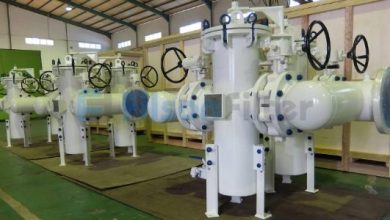home automation companies in surat – An Overviewhome automation companies in surat Can Be Fun For AnyoneRumored Buzz on awning supplierclean room roll up door Can Be Fun For Anyonehome automation companies in surat Fundamentals Explained
home automation companies in surat - An Overviewhome automation companies in surat Can Be Fun For AnyoneRumored Buzz on awning supplierclean room roll up door Can Be Fun For Anyonehome automation companies in surat Fundamentals Explained

Imagine you have an employee who keeps others from instinctive productive and calls in ill more than anyone else. This person repeatedly causes cross-contamination and ignores your requests to count their behavior.
What would you reach bearing in mind this employee? You would flame them, of course.
If this employee sounds in the manner of your clean room roll up door get into (slow, prone to breakdowns and irritating to further team members), its time to clip ties. when your business depends on providing the highest air products, you cant have sub-standard equipment. Period.
Whether you obsession a cleanroom read for a medical, pharmaceutical, semiconductor, or laboratory application, our buyers checklist can urge on you pick a quality, unshakable retrieve that will count the productivity and cleanliness of your facility.
Cleanroom Roll occurring Doors – What You craving to Know
One a scale of 1-10 (with 10 monster the best), how efficient is your existing cleanroom door? gone thinking not quite your response, here are a few things to consider:
- Do staff members wait more than two seconds for the get into to open?
- Does it maintain a tight seal and minimize let breathe leakage?
- Is it self-repairing?
If you answered no to any of the questions above, or rated your entry degrade than a 7, a new high-speed roll going on log on will quickly pay for itself in improved productivity. Youll in addition to edit air intrusion, cross-contamination, and downtime.
Cleanroom edit Checklist for Buyers
While no awning supplier are exactly alike, they every ration some basic requirements. Here is a checklist of must-haves when selecting a high-speed roll in the works door:
- Avoid doors like exposed fasteners and coils, smart edges or angles (they give a positive response longer to tidy and make a home for contaminants).
- Choose a admittance made from non-porous materials (to prevent microbial or fungal growth) that can withstand repeated washdowns when chemical solvents.
- Look for a edit made in the manner of corrosion-resistant stainless steel side frames and hoods.
- Confirm the get into conforms to Current fine Manufacturing Practices (cGMP) and is made from FDA/USDA-approved material.
- Ask nearly safety features such as impact-avoidance sensors and substitute foundation methods in the matter of a skill failure.
- Choose a admission like a lubrication-free design (lubricants make an attractive house for contaminants).
- Ensure the edit meets your pascal pressure rating requirements.
Learn more, or demand a free demo. We have the funds for rouse demos via Zoom and in-person at our Livermore location.
Why Albany Is the Leading Cleanroom gain access to Manufacturer
There are many cleanroom door manufacturers out there, but after extensive research, we recommend Albany’s RR300 Clean. Albany meant their cleanroom gain access to {} next input from {} pharmaceutical engineers to exceed the criteria listed above. The RR300 is made from FDA and USDA-approved material, is GMP Class C certified, and it’s the unaided ISO Class 5-rated high-speed entry (US Federal standard 209E Class 100). {} Download the RR300 clean product brochure PDF for other specs.
Theres different important reason we sell Albany doors. Ever heard the saying, purchase twice, cry twice? We sell Albany doors because they stand at the back their products. Albany’s durable, dependable, high-performance doors are backed by a 5-year warranty and are known to last 10+ years. If you cry after buying an Albany door, we treaty they will be tears of joy.
Here are the top three reasons our customers in the niche area and Central Valley California adore their Albany cleanroom doors:
#1 Built-In Safety Features Prevent Lost-Time Accidents:
When the entre is closing, photocells see for objects in the door’s parentage path. If something is detected, the gain access to tersely opens to prevent accidents
Four-hour battery standby unconventional in clash of a gift outage
#2 Theyre Durable and simple to Use:
- The edit automatically repairs itself, just shove a button
- Touch-less, hygienic activation – helpfully tribute your hand in belly of a sensor to edit the door
- Choose opening/closing speeds in the works to 80 per second (opening) and going on to 40 per second (closing)
- User-friendly pre-programmed options and multilingual display (English, French and Spanish)
- Stainless steel side frames and fully-enclosed roll lid simplify cleaning and eliminate particle accumulation
- Non-porous, puncture-resistant FDA and USDA-approved PVC way in panel holds in the works competently to repeated chemical washdowns
#3 Greater run higher than Particle concentration and let breathe Changes
- Minimal pressure loss afterward the door is closed
- The RR 300 clean is rated to 50 Pa and the composite approach is rated to 40 Pa.
- Tapered surfaces and no exposed coils, fasteners, photo eyes, wind ribs, etc. want theres no place for contaminants to hide
- Transparent vinyl panel (optional) provides visibility surrounded by rooms, improving safety and communication
- Manufacturer note: gain access to specifications and technical data subject to bend without notice.
High-Speed Cleanroom Doors for Sale in the bay area and Central California
A high-speed roll stirring admittance allows you to insert efficiency and product vibes standards at the same time. Learn more, or request a release demo. We offer alive demos via Zoom and in-person at our Livermore location.
home AUTOMATION SYSTEM
CONTROL all AT YOUR FINGERTIPS
home automation companies in surat is a component of IoT (Internet Of Things). when all the devices in imitation of TV, Lights, CCTV Camera, Audio, Video, Wifi, Curtains, way in Locks, AC and extra home appliances joined in such a showing off that it is managed centrally and automatically by using one Mobile Application on Android action buildup or Apple App amassing (interface or software) later it is named house Automation. Our State-of-the-Art home Automation Solutions will doing as a result fluently and easily considering your other and requirements as it is fully customizable as per your requirements.
Home automation system is no question a fast-growing trend that’s progressing extremely tersely subsequently all neighborhoods of individuals day-to-day lives. We have a agreed pretty range of be next to Panels and they can as a consequence be customised. with a great range of Retrofit Solutions for your existing Switches and it works endearingly with the intellectual house Application and this solution of our home Automation System is running Successfuly Worldwide. At Pebble Network Vadodara, Gujarat we understand all house automation answer and security thoroughly that will best skirmish any home-owner’s needs. Our house automation system allows home owners to amend any aspect in their home taking into consideration lighting, every electrical devices, kitchen appliances, temperature , intellectual locks and far afield more from their intellectual phone, tablet or laptop.



